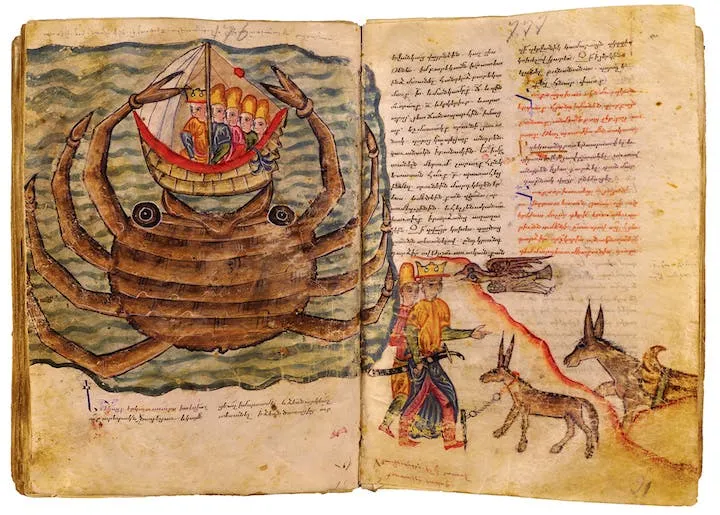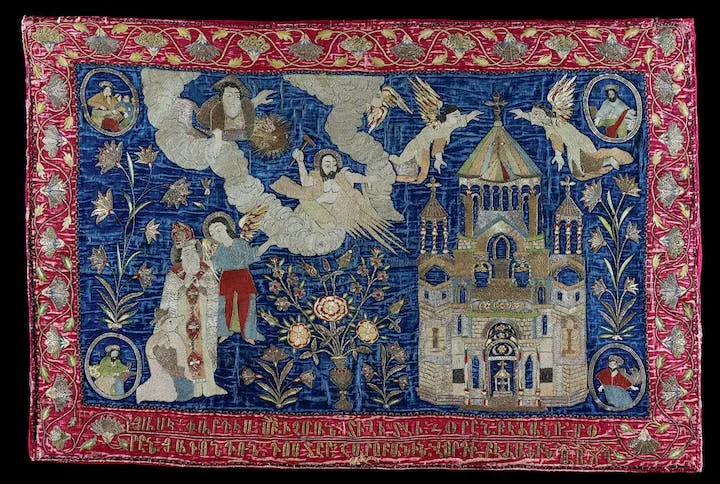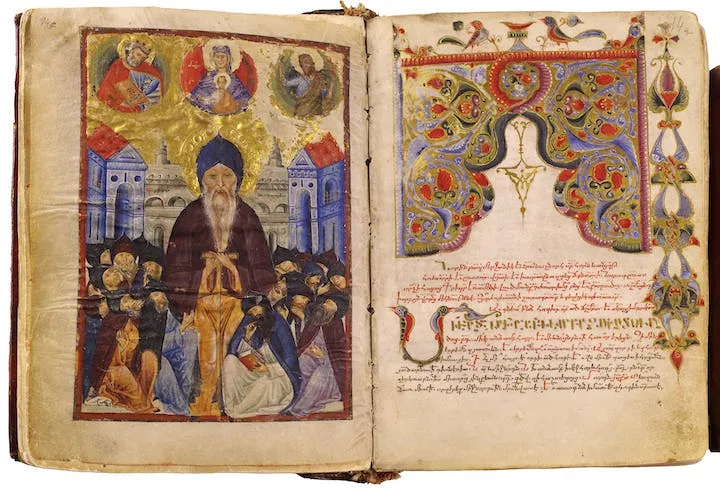The Met’s Latest Show Traces Armenia’s Cultural Evolution
Armenia! features more than 140 artifacts, including gilded reliquaries, illuminated manuscripts, textiles
In Armenia!—exclamation point intended— the Metropolitan Museum of Art tackles its first large-scale exhibition devoted to the nation by presenting 14 centuries worth of its history and culture. As curator Helen C. Evans tells the Armenian Mirror-Spectator's Taleen Babayan, her aim for the show, whose launch last weekend coincided with the 27th anniversary of the Republic of Armenia regaining its independence, is to put a spotlight on the overlooked artistic significance and distinctive national identity of the landlocked country situated at the far eastern reaches of the western world.
“I would like to think in five to ten years, if you were doing a survey of art history, you would put an Armenian object in it. Right now you do not,” Evans says.
Evans, who serves as the museum’s Mary and Michael Jaharis Curator for Byzantine Art, has wanted to organize a celebration of Armenian history since completing her dissertation several decades ago. Thanks to loans from the Republic of Armenia's Mother See of Holy Etchmiadzin, the Matenadaran and the National History Museum, as well as major institutions across Europe, the Middle East and the United States, this milestone has finally arrived.
Featured artifacts speak to the unheralded diversity of Armenian art. Although Evans says that the country is most commonly associated with manuscripts (as represented in the show by loaned volumes including the Patriarchate manuscript, a medieval era illumination illustrated by Armenian T’oros Roslin), artists have also produced significant sculptural, reliquary and textile-based works.
In total, the show draws on an eclectic collection of more than 140 artifacts—including gilded reliquaries, illuminated manuscripts and rare textiles, many of which have never been previously displayed in the United States—to trace the Eurasian nation’s history.
“I think the exhibition shows that although Armenians have frequently been—as other cultures have—attacked by outside forces, they’ve also always revived, and as the works in the show indicate, remained a coherent people with an incredible tradition of art,” Evans explains in a recent episode of the Art Newspaper’s weekly podcast. “So I perhaps see it as tragic with great rays of sunshine.”
As the Art Newspaper’s Nancy Kenney writes, the exhibition opens with items related to Armenia’s conversion to Christianity in 301 A.D., when Tiridates III of Armenia succumbed to the proselytizing arguments of Saint Gregory the Illuminator. The Armenian Weekly’s Florence Avakian identifies the site of this landmark religious event as Greater Armenia, or the contemporary Republic of Armenia, and notes that Armenia and Ethiopia were two of the world’s earliest converts, embracing Christianity before the Roman Empire.
The show concludes at the turn of the 17th century, when the arrival of printed books heralded the end of the Middle Ages and the expansion of trade networks enabled the nation to spread its influence from the Mediterranean kingdom of Cilicia to Safavid Persia’s New Julfa, the Crimea and Italy.
The cross-cultural exchange sparked by these international trade links is apparent throughout the exhibition: Kenney writes that a pair of 11th-century gold earrings dotted with the birds and crescent shapes commonly seen in Islamic art, as well as a 13th-century depiction of an archbishop clad in Chinese dragon-adorned robes, exemplify the complex merging of cultural traditions.
“The way we are presenting art is showing how Armenians with their conversion to Christianity, created a visual identity that is incredibly compelling and goes through a variety of styles in the millennium we are covering,” Evans tells Avakian. “At the same time, it always has the element that ties Armenians together.”
Armenia! is on view at the Metropolitan Museum of Art in New York City through January 13, 2019.
/https://tf-cmsv2-smithsonianmag-media.s3.amazonaws.com/accounts/headshot/mellon.png)



/https://tf-cmsv2-smithsonianmag-media.s3.amazonaws.com/accounts/headshot/mellon.png)